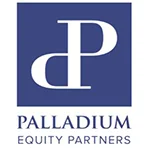 Rick Gould Rick Gould |
It was June 2001. Google was just a pup and Facebook and Twitter hadn’t yet been born. People were still consuming and advertisers were still purchasing print media. As far as creative services firms were concerned, buyers had a clear delineation between marketing and PR shops.
June 2001 was also when I sold my CPA firm and started my M&A Advisory firm, Gould+Partners, which continues to thrive today. But three months after I began the firm, the Sept. 11 attacks happened, and the world changed.
Prior to the attacks, things were pretty robust for PR M&As. The late 1990s and 2000 were the heyday for industry consolidation, with a steady flow of deals encompassing multiple business verticals.
In addition to independent firms, the major advertising holding companies, such as Omnicom, Interpublic Group, WPP and Havas, were acquiring PR shops, bringing in new talent as well as fledgling content marketing programming.
However, regardless of who was doing the purchasing, firms were being overvalued. Sellers were garnering prices they thought they could only dream about. Even sellers of mediocre firms were becoming multimillionaires (as many buyers incurred losses because the firm’s past financials didn’t live up to future expectations).
At the time, the financial teams cutting these transactions weren’t so savvy when assessing the value of the targeted firm. Adding insult to injury, pre- and post-integration plans—a vital M&A component today—didn’t really exist 20 years ago, and then the Sept. 11 attacks seriously hampered PR M&As. With buyers understandably skittish about the impact the attacks would have on the global economy, the appetite for creative services firms diminished, and deal activity slowed to a standstill.
The economy sputtered along for a few years before The Great Recession in 2007-2008, which brought PR M&As to a virtual halt. Strategic buyers were strapped for cash while private equity players—who’d jumped into the ring to land PR, marketing and ad firms in the late 1990s and early 2000s—put their roll-up plans on hold.
But, in cyclical fashion, M&As for creative services firms returned to adequate levels starting in the 2010s, and have picked up in the last years along with the larger economy. Indeed, investors remain pretty confident these days, what with GDP up 2.3 percent in 2019, the stock market soaring to record highs, and low unemployment (3.6 percent).
But the big picture for PR M&As right now is decidedly mixed. Successful agencies have been fetching solid multiples, but most of them have been modeled on a “Build to Sell” strategy, meaning focusing on top-line growth and maximizing profitability before going to market (in some cases, several years prior).
These independent agencies have been acquired by much larger firms, the holding companies or relatively obscure firms with a war chest saved up for acquisitions. The acquired firms, of course, now have access to the resources and talent that could take their firm to a new and more profitable level, a win-win for both seller and buyer.
At the same time, other PR firms with longevity, a great brand and quality clients, have been passed by. They’ve enjoyed the fruits, perks and financial flexibility of running a lifestyle firm, but it’s cost them dearly.
Even those principals who decide that now is the time to sell could be in for a rude awakening. Unless they have a second—and seasoned—tier of management that’s ready to take charge of the firm and aggressively build on its clients, staff and creative services, the firm may be unsalable. Ditto for agencies that are bleeding cash, that are barely meeting payroll.
It begs the question: Aside from perhaps waiting too long to sell, why does the value of these firms come up short? They have the talent, in terms of having a deep bench and, I have little doubt, a desire to bolster the overall appeal of their firm and generate more lead revenue.
The answer is classic and simple. Many otherwise competent PR pros, who do terrific and award-winning work on behalf of their clients, simply neglect to manage their firm properly. Their salary and perks are too excessive for the net revenue level, there’s too much overservicing and very little long-term planning.
Owners have run their firm to suit their lifestyle, not suit their lifestyle based on what the firm can afford. Their rent is too high. Their total salaries aren’t in sync with best practices benchmarks. They ignore what I’ve been preaching through all the market fluctuations throughout the last 30 years: the economic necessity of building a profitable business and managing your firm “as if” you’re going to sell it, whether that event is 18 months or several years down the road.
Too many senior executives continue to ignore what I call managing their firm “the right way,” which encompasses a set of business practices designed to maximize the value of agencies and put acquired firms on a path for financial success and monetization.
Unfortunately, the pattern of resistance that existed 20 years ago is still swirling around in 2020. What’s puzzling is that the resistance persists despite the seismic and ongoing changes in PR and marketing communications in the last two decades.
The key difference is many firms that sold for prices that weren’t an accurate reflection of their business’s value got away with it in 2000. In a much more Darwinian business environment—with buyers having a keener eye on what they want to acquire and the potential upside—firms won’t get away with it in 2020.
***
Rick Gould, CPA, J.D., is Managing Partner of Gould+Partners.


 Spectrum Science acquires clinical trial recruitment and engagement solutions provider Continuum Clinical.
Spectrum Science acquires clinical trial recruitment and engagement solutions provider Continuum Clinical. How PR agency owners can navigate the M&A process in a way that yields a rewarding experience for both owners and the teams they leave behind.
How PR agency owners can navigate the M&A process in a way that yields a rewarding experience for both owners and the teams they leave behind. Ten potential ways an agency sale can positively benefit team members and employees.
Ten potential ways an agency sale can positively benefit team members and employees. Kekst CNC reps Palladium Equity Partners and its joint venture affiliate, Palladium Heritage, on the acquisition of National Auto Parts, USA;, NAP San Diego; and National Auto Parts-Oakland to form Collision Auto Parts, a platform serving customers in the automotive aftermarket collision repair sector.
Kekst CNC reps Palladium Equity Partners and its joint venture affiliate, Palladium Heritage, on the acquisition of National Auto Parts, USA;, NAP San Diego; and National Auto Parts-Oakland to form Collision Auto Parts, a platform serving customers in the automotive aftermarket collision repair sector. ICR has acquired Bullfrog + Baum, the 23-year-old PR shop focused on the hospitality, lifestyle, travel and consumer marketing sectors.
ICR has acquired Bullfrog + Baum, the 23-year-old PR shop focused on the hospitality, lifestyle, travel and consumer marketing sectors.


 Have a comment? Send it to
Have a comment? Send it to 
No comments have been submitted for this story yet.